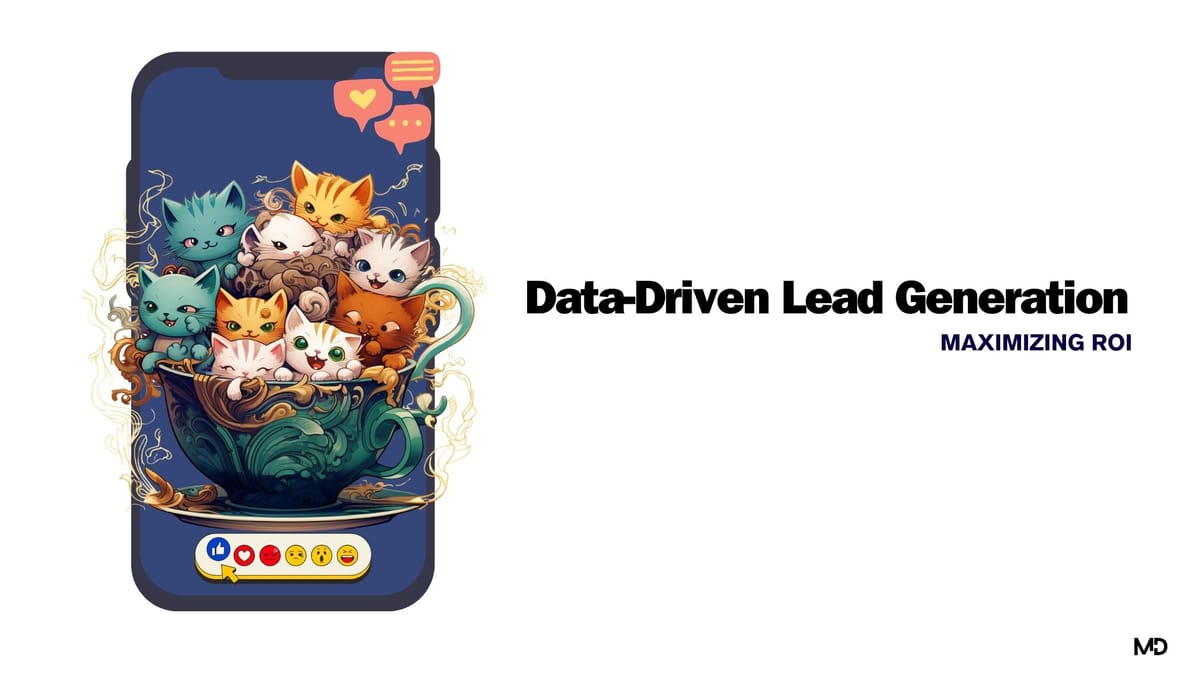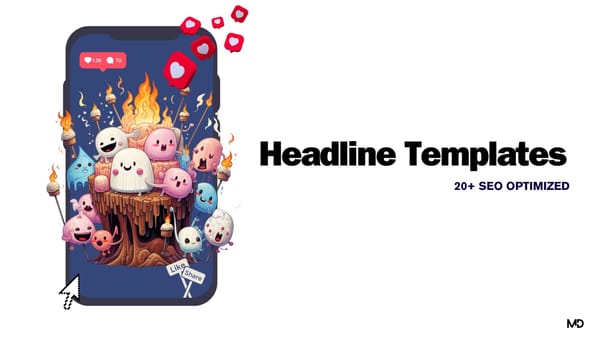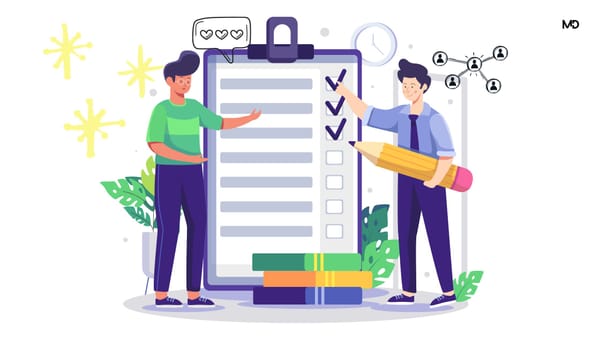5 Steps to Maximizing ROI with Data-Driven Lead Generation

Content marketing isn't just effective - it's also efficient. By how much? It costs 62% less than traditional outbound lead generation strategies and generating three times as many leads according to industry studies.
But, not everyone has cracked the code to making their content strategy work wonders.
Some businesses go all out, churning thousands of AI-generated articles and posts, hoping to strike gold. Sadly, they often find themselves stuck in a loop of unpredictable traffic and leads that just don't convert.
The missing piece? A solid, data-driven lead generation strategy that's more than just a content factory.
What Is Data-Driven Lead Generation?
Think of data-driven lead generation as your marketing GPS. It uses data analytics to find potential customers, figure out what they need, and create marketing that speaks their language.
5 Perks of Going Data-Driven
1. Better Targeting: Data spills the beans on who your ideal customers are. Knowing this, you can make content they'll love, boosting engagement. 41% say inbound marketing delivers measurable ROI.
2. Smarter Spending: With smarter marketing decisions, you can focus your budget on what actually works, maximizing ROI.
3. More Conversions: When you know what ticks your audience, you can make offers they can't resist, bumping up your conversion rates.
4. Deeper Insights: Dive into how customers interact with your brand. This intel helps you tweak your strategy to keep them coming back for more. Companies with a successful blog generate 67% more leads, showcasing the power of insightful, data-driven content.
5. Edge Over Rivals: Data lets you see trends and adapt fast, giving you a leg up on the competition still playing the guessing game.

5 Steps to Boosting ROI with Data-Driven Lead Gen
Ready to get more bang for your marketing buck? Here are five steps to make data-driven lead generation work for you.
Step 1: Get Your Data Tools Ready
A killer content marketing strategy starts with solid data foundations. You need to keep tabs on how folks interact with your content and what gets them clicking.
Must-Have Tools:
Google Analytics
- Pros: Gives you the lowdown on site traffic and behavior. It's gold for tweaking your content plan. And hey, it's free for the basic stuff.
- Cons: It can be a bit much if you're new to the data game. The fancy features might take some getting used to.
CRM Software (like Salesforce or HubSpot)
- Pros: Keeps all your customer info in one spot, making it easier to personalize your approach. They play well with other tools, too.
- Cons: The price tag can be a bit steep, especially for the little guys. Plus, they need some elbow grease to get going and keep running smoothly.
Social Media Analytics (Hootsuite, Buffer Insights)
- Pros: These tools let you in on which content is hitting the mark on social channels and help manage your accounts without breaking a sweat.
- Cons: The really juicy analytics and management perks come at a price. And sometimes, they might not dive as deep into platform-specific details as you'd like.
SEO Tools (SEMrush, Ahrefs)
- Pros: They're treasure troves for SEO insights, helping you boost your content's search game and uncover new ideas.
- Cons: Subscription fees can add up, and there's a bit of a learning curve to really get the most out of them.
Email Platforms (Mailchimp, ConvertKit)
- Pros: Great for email marketing, these platforms show you how your campaigns are doing, from who's opening your emails to who's clicking through.
- Cons: The really cool features cost more, and the range of options varies by how much you're willing to spend.
User Experience Tools (Hotjar, Crazy Egg)
- Pros: They let you see exactly how visitors use your site, from where they click to how far they scroll, helping you make your site better for them.
- Cons: You've got to handle privacy right, and the insights need you to take action to really make a difference.
Step 2: Know Your Audience Inside Out
Getting to know your audience is crucial. Data helps you figure out their likes, dislikes, and everything in between.
Google Analytics, social media insights, and CRM data work together to give you a full picture of who's engaging with your content and how. This info is what you need to make your content strategy more on-point, relevant, and, frankly, more effective.
But remember, it's not just about collecting data. It's what you do with it that counts. The aim? Create content that doesn't just grab attention but keeps folks interested and moving closer to hitting that 'buy' button.

Step 3: Crafting Content That Hits the Mark
Let's talk SEO first—it's a big deal with 14.6% conversion rate. Imagine this: doing your keyword homework can literally put your content right where your audience can't miss it. And here's the kicker: it's all about weaving those keywords in so they feel just right, like they've always belonged there.
Delve into data to pinpoint exactly what captivates your audience. Perhaps it's scouring forums for emerging questions, monitoring articles that are setting trends in your industry, or staying attuned to the buzz on social media. By doing so, you ensure you're consistently aligned with your audience's interests, enhancing the appeal and accuracy of your content.
Next up - how does your audience like their content served? Quick bites or deep dives? Using data to figure out their taste helps you tailor your content just the way they like it, boosting those engagement levels.
Identifying your audience's preferred online spaces allows you to customize your distribution strategy, ensuring visibility among the right crowd.

Step 4: Measuring What Matters
Knowing if your content's hitting its marks comes down to keeping tabs on a few key things: how many leads it's pulling in, how many of those leads are taking the next step, and what kind of return you're seeing on your investment.
Lead Tracking: How many new leads is your content drumming up? This number gives you a clear picture of its pull.
Conversion Watching: Of those new leads, how many are taking the next step? High conversion rates mean your content's doing its job well.
ROI Calculating: At the end of the day, it's about the return you're getting on your content marketing bucks. Figuring out your ROI ties everything back to your bottom line, showing you the real value of your content efforts.
Step 5: Making Your Strategy Even Better
Monitoring your strategy's performance and being agile enough to adapt is crucial for maintaining a cutting-edge content approach. Dive into the data to discover the high-performing elements—be it specific topics, formats, or distribution channels that truly resonate with your audience. Let these successes inform and shape your future content creation endeavors.
Not everything will be a hit, and that's perfectly fine. The beauty of data-driven strategies lies in their ability to illuminate areas that aren't performing as expected. This feedback provides a roadmap for adjustments, ensuring your content strategy remains dynamic and effective.
Wrapping It Up
Embracing a data-driven approach for your lead generation transforms the game entirely. It allows you to deeply understand your audience, craft content that truly resonates, and witness an enhanced ROI from your marketing initiatives.
Feeling a bit overwhelmed by all the data talk? I'm here to help. Shoot me a message, and let's chat about how to get your lead generation strategy on the data-driven track.





